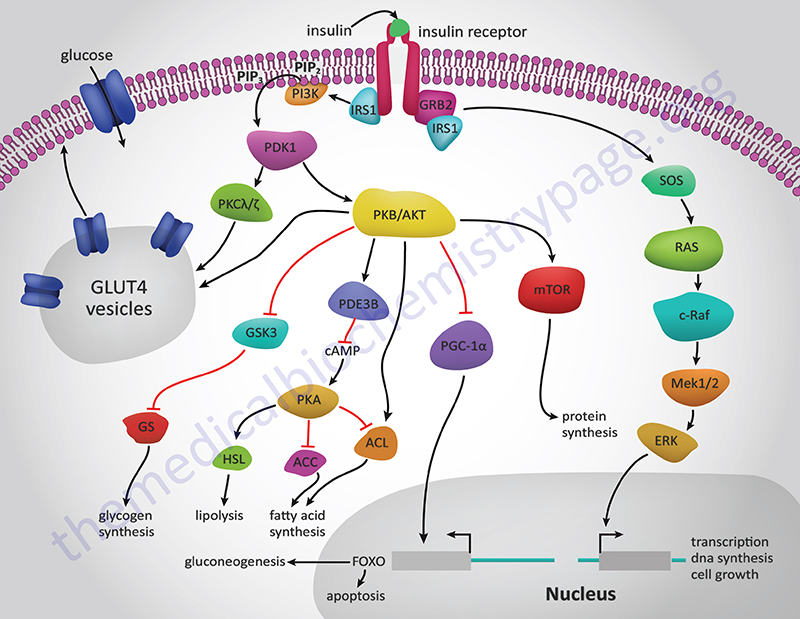a) It's Thanksgiving break! You join some friends for a traditional meal, and it smells delicious! Turkey, stuffing and pies, oh my! The small chemicals that your nose detects, called odorants, from these foods (like cloves, garlic, apples, and sugar) bind to G-protein couples receptors in your olfactory system and activate a signal transduction cascade. What are the next few steps of signaling, after the odorant binds? (Stop at the activation of an effector molecule.)
Watch these, they will help answer your question:
1)
[Animation] - Membrane-Bound Receptors that Activate G Proteins2)
[Animation] - Membrane-Bound Receptors, G Proteins, and Ca2+ Channelsb) Although some people believe that eating turkey can make you sleep because of its tryptophan content, it has about the same tryptophan as other kinds of meats. An alternative ides is that the carbs you eat at a big meal produces insulin, which activates a different pathway. What is the receptor for this pathway, and what is one example of a downstream signal it induces?
Insulin exerts all of its biological activities, both as a hormone and as a growth factor, by binding to a cell surface receptor complex. The insulin receptor is a member of the membrane-spanning receptor family that harbors intrinsic tyrosine kinase activity. However, the insulin receptor is unique in that it is a heterotetrameric complex composed of two completely extracellular α-peptides that are disulfide bonded to the two transmembrane-spanning β-peptides. Both the α- and β- subunits of the receptor complex are derived from a single gene (symbol = INSR). This processing of the receptor is reminiscent of the processing of the preproinsulin protein leading to two peptides (A and B) disulfide bonded together to form bioactive insulin. Two alternative splicing variants of the insulin receptor preproprotein are generated from the INSR precursor mRNA. One form contains exon 11 sequences (termed the IR-B form) while the IR-A form does not. The result of the alternative splicing is that the α-subunit from the IR-B form has a 12-amino acid extension at its C-terminus. This form of the α-subunit is referred to as αCT. The insulin receptor can also bind the related growth factors mentioned above, IGF-1 and IGF-2.
When insulin binds to the receptor it activates the intrinsic tyrosine kinase activity of the β-subunits resulting in autophosphorylation of the receptor. These autophosphorylations occur on between 6 and 13 tryosine residues with the most frequently observed being tyrosines at amino acid position 1316, 1322, 1146, 1150, and 1151 in the intracellular portions of the β-subunits.

Multiple roles of insulin. When insulin binds to its receptor it triggers receptor autophosphorylation that generates docking sites for insulin receptor substrate proteins (IRS-1–IRS4). IRS proteins in turn trigger the activation of a wide array of signal transducing proteins (highly simplified in this Figure). The end results of insulin receptor activation are varied and in many cases cell-type specific but includes alterations in metabolism, ion fluxes, protein translocation, transcription rates, and growth properties of responsive cells. Arrows represent positive, activating functions. T-lines represent inhibitory functions. Most abbreviations are described within the text below. PDE3B = phosphodiesterase 3B (also called adipocyte cAMP phosphodiesterase), GS = glycogen synthase, HSL = hormone sensitive lipase, ACC = acetyl-CoA carboxylase, ACL = ATP-citrate lyase.
c) Interestingly, more tryptophan than other amino acis is found int the bloodstream after this kind of meal, because the others have taken up more efficient by cells in response to insulin. Tyrptophan is converted in the brain to 5_HT, which further converted to melatonin. What are 5_HT and melatonin, and what kind of receptors mediate a physiological response to these signals?
I believe 5-hydroxytryptamine binds to the 5-HT2A receptor.